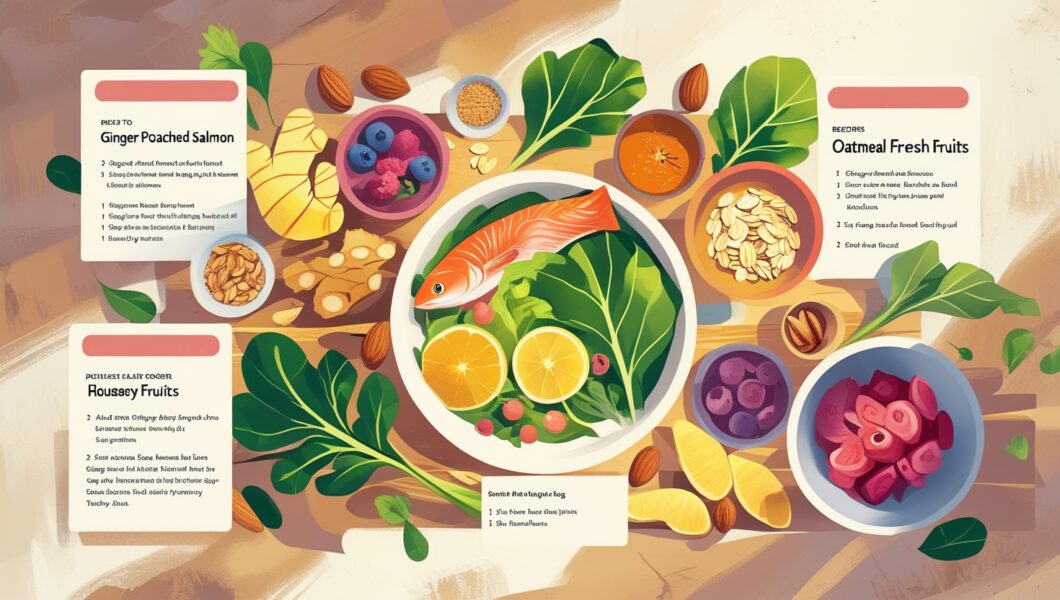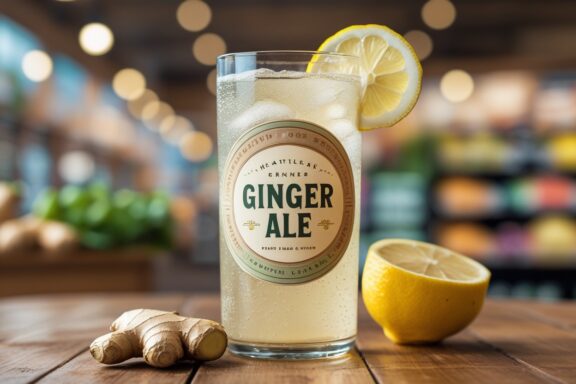Living with acid reflux doesn't mean sacrificing flavor! Our collection of carefully crafted acid reflux recipes proves that managing GERD symptoms can be both delicious and satisfying. From soothing breakfast options to hearty dinners, these tested recipes will transform your relationship with food while keeping that pesky heartburn at bay.
Ugh, here we go again—that familiar burning sensation creeping up your chest after what seemed like an innocent meal. Sound familiar? Well, you're definitely not alone in this struggle! Millions of people worldwide battle with gastroesophageal reflux disease (GERD), commonly known as acid reflux, and honestly? It's a real pain in the… chest.
But here's the thing—and this might surprise you—having acid reflux doesn't mean you're doomed to a lifetime of bland, boring meals that taste like cardboard. Nope! With the right approach and some carefully selected acid reflux recipes, you can actually enjoy food again without that dreaded burning aftermath. Trust me on this one; I've seen countless patients transform their relationship with food using these exact strategies.
Understanding Acid Reflux: The Science Behind the Burn
Before we dive headfirst into those mouth-watering recipes, let's get real about what's actually happening inside your body when acid reflux strikes. According to the American Gastroenterological Association, GERD affects approximately 20% of the U.S. population—that's roughly 60 million people dealing with this condition regularly.
When you eat, your lower esophageal sphincter (LES)—think of it as a muscular doorway between your esophagus and stomach—should close tightly after food passes through. However, when this “door” doesn't shut properly or opens at inappropriate times, stomach acid can splash back up into your esophagus. Ouch! This backward flow of acid is what causes that burning sensation, chest pain, and sometimes even that awful sour taste in your mouth.
The foods we choose play a massive role in either triggering or preventing these uncomfortable episodes. Certain ingredients can relax the LES, increase stomach acid production, or irritate the already sensitive esophageal lining. On the flip side, selecting the right foods can actually help strengthen the LES and reduce acid production, making your digestive system work more harmoniously.
The Foundation of GERD-Friendly Cooking
Creating effective acid reflux recipes isn't rocket science, but it does require understanding which ingredients are your friends and which ones are, well, frenemies at best. The Mayo Clinic emphasizes that dietary modifications remain one of the most effective long-term management strategies for GERD sufferers.
Foods to Embrace in Your Acid Reflux Recipes:
- Lean proteins (chicken breast, turkey, fish, tofu)
- Non-citrus fruits (bananas, melons, apples, pears)
- Vegetables (except tomatoes, onions, and garlic)
- Whole grains (oatmeal, brown rice, quinoa)
- Low-fat dairy products
- Healthy fats in moderation (olive oil, avocado)
- Herbs like ginger, fennel, and parsley
Foods to Avoid Like the Plague:
- Citrus fruits and juices
- Tomato-based products
- Spicy foods and hot peppers
- Chocolate (sorry!)
- Caffeinated beverages
- Carbonated drinks
- High-fat foods
- Alcohol
- Peppermint and spearmint
Now, I know what you're thinking—”Great, there goes half my favorite foods!” But hold on there, don't throw in the towel just yet. These restrictions might seem overwhelming initially, however, you'll be amazed at how creative and delicious your meals can become with a little ingenuity and the right recipes.
Breakfast Acid Reflux Recipes: Starting Your Day Right
Soothing Oatmeal Variations
Starting your morning with the right fuel can set the tone for your entire day's digestive experience. Oatmeal serves as an excellent foundation for acid reflux recipes because it's naturally alkaline and provides excellent fiber content, which helps absorb excess stomach acid.
Basic Anti-Reflux Oatmeal Recipe:
- 1 cup old-fashioned oats
- 2 cups low-fat milk (or almond milk)
- 1 sliced banana
- 1 tsp honey (optional)
- Pinch of cinnamon
Cook the oats according to package directions, then top with banana slices and a drizzle of honey. The banana provides natural sweetness while helping neutralize stomach acid—talk about a win-win situation!
But wait, there's more! You can jazz up this basic recipe in countless ways. Try adding diced pears for extra sweetness, or incorporate some ground flaxseed for additional fiber and omega-3 fatty acids. Some folks even love adding a handful of blueberries (they're low in acid despite being a fruit) for antioxidants and natural flavor enhancement.
Gentle Green Smoothies
Smoothies can be tricky territory for GERD sufferers, but when done right, they become powerful allies in your acid reflux recipe arsenal. The key lies in selecting the right combination of ingredients that won't trigger symptoms while providing essential nutrients.
GERD-Friendly Green Smoothie:
- 1 cup spinach (trust me, you won't taste it!)
- 1/2 cucumber, peeled
- 1 ripe banana
- 1/2 cup coconut water
- 1 tsp fresh ginger (grated)
- Ice cubes as needed
Blend everything until smooth and creamy. This powerhouse combination provides hydration, fiber, and anti-inflammatory compounds that can actually help soothe your digestive system. The ginger, in particular, has been shown in studies to help with nausea and digestive discomfort—pretty neat, right?
Lunch Solutions: Midday Meals That Won't Backfire
Turkey and Avocado Lettuce Wraps
When lunchtime rolls around, you need something satisfying that won't leave you reaching for antacids an hour later. These turkey lettuce wraps are absolute lifesavers—they're light, nutritious, and incredibly satisfying without being heavy on your digestive system.
Ingredients:
- 6 large butter lettuce leaves
- 8 oz sliced turkey breast (low-sodium)
- 1 ripe avocado, sliced
- 1 cucumber, julienned
- 2 tbsp olive oil
- 1 tbsp apple cider vinegar (in small amounts, this can be okay for some)
- Salt to taste
Simply layer the turkey, avocado, and cucumber in the lettuce leaves, drizzle with the oil and vinegar mixture, and roll them up burrito-style. These wraps are perfect for meal prep too—just store the components separately and assemble when ready to eat.
The beauty of this recipe lies in its simplicity and adaptability. Some days you might want to add some thinly sliced carrots for crunch, or maybe some fresh herbs like basil or parsley for extra flavor. The possibilities are endless, and your stomach will thank you for keeping things gentle yet satisfying.
Quinoa Power Bowls
Quinoa has become something of a superfood darling, and for good reason—it's a complete protein, naturally gluten-free, and works beautifully in acid reflux recipes. These power bowls are incredibly versatile and can be customized based on your preferences and what you have available in your kitchen.
Base Recipe:
- 2 cups cooked quinoa
- 4 cups mixed greens
- 1 grilled chicken breast, sliced
- 1/2 cup steamed broccoli
- 1/4 cup pumpkin seeds
- Simple olive oil and herb dressing
The key to making these bowls GERD-friendly is keeping the seasonings mild and avoiding any potential trigger ingredients. Instead of heavy, creamy dressings that might cause problems, opt for a simple combination of olive oil, dried herbs, and a pinch of salt.
Dinner Delights: Evening Acid Reflux Recipes
Herb-Crusted Baked Salmon
Fish, particularly salmon, provides excellent lean protein and omega-3 fatty acids that can help reduce inflammation throughout your body—including your digestive system. This herb-crusted preparation is elegant enough for company yet simple enough for a weeknight dinner.
Ingredients:
- 4 salmon fillets (6 oz each)
- 2 tbsp olive oil
- 1/4 cup fresh dill, chopped
- 2 tbsp fresh parsley, chopped
- 1 tsp dried oregano
- Salt and white pepper to taste
- Lemon wedges for serving (use sparingly)
Preheat your oven to 400°F, brush the salmon with olive oil, and coat with the herb mixture. Bake for 12-15 minutes until the fish flakes easily with a fork. Serve with a small wedge of lemon on the side—while citrus can be problematic for many GERD sufferers, some people can tolerate small amounts, and the choice is yours to make.
This recipe works wonderfully with various sides that are also GERD-friendly. Consider pairing it with roasted sweet potatoes, steamed green beans, or a simple rice pilaf. The combination provides a balanced, satisfying meal that shouldn't trigger uncomfortable symptoms.
Comforting Chicken and Rice Skillet
Sometimes you just crave comfort food, and this one-pan wonder delivers all the satisfaction without the digestive drama. It's hearty, warming, and perfect for those evenings when you want something that feels like a hug in a bowl.
Ingredients:
- 4 boneless chicken thighs, skinless
- 2 cups brown rice
- 4 cups low-sodium chicken broth
- 2 carrots, diced
- 2 celery stalks, diced
- 1 tsp dried thyme
- Salt and pepper to taste
Brown the chicken in a large skillet, remove and set aside. Add the rice to the same pan and toast for 2-3 minutes, then add the broth, vegetables, and seasonings. Return the chicken to the pan, bring to a boil, then reduce heat and simmer covered for 45 minutes until the rice is tender and the chicken is cooked through.
This recipe is incredibly forgiving and adapts well to whatever vegetables you have on hand. Just remember to stick with GERD-friendly options—think carrots, celery, green beans, or zucchini rather than onions, peppers, or tomatoes.
Snacks and Sides: Supporting Players in Your Acid Reflux Recipe Collection
Cooling Cucumber Yogurt Dip
Snacking can be a minefield when you're dealing with acid reflux, but this cooling dip paired with some rice crackers or cucumber slices makes for a perfect between-meal option. It's refreshing, protein-rich, and contains probiotics that may support digestive health.
Simple Recipe:
- 1 cup plain Greek yogurt (low-fat)
- 1 large cucumber, finely diced
- 1 tbsp fresh dill
- 1 tsp olive oil
- Salt to taste
Mix everything together and chill for at least 30 minutes before serving. The probiotics in yogurt can help maintain a healthy gut microbiome, while the cucumber provides hydration and a satisfying crunch that won't irritate your esophagus.
Beverages: What to Sip When Acid Reflux Strikes
Ginger-Infused Water
Staying hydrated is crucial for managing acid reflux, but plain water can sometimes feel boring. This gently flavored water provides the benefits of ginger's anti-inflammatory properties while keeping you properly hydrated throughout the day.
Preparation:
- 2-inch piece of fresh ginger, sliced thin
- 8 cups filtered water
- Optional: a few fresh mint leaves
Let the ginger slices steep in water for 2-3 hours, then strain and serve chilled. According to research published in the World Journal of Gastroenterology, ginger contains compounds that may help reduce gastric motility and inflammation, making it a valuable addition to acid reflux recipes and beverages.
Frequently Asked Questions About Acid Reflux Recipes
Q: Can I still enjoy desserts with acid reflux?
A: Absolutely! However, you'll want to avoid chocolate, citrus, and high-fat options. Try baked apples with cinnamon, banana-based “nice cream,” or oatmeal cookies made with minimal sugar and no chocolate chips.
Q: How soon before bed should I stop eating to prevent nighttime reflux?
A: Most gastroenterologists recommend finishing your last meal at least 3 hours before lying down. This gives your stomach time to empty and reduces the likelihood of acid backing up into your esophagus while you sleep.
Q: Are there any cooking methods I should avoid?
A: Fried and heavily sautéed foods can be problematic due to their high fat content. Instead, focus on baking, grilling, steaming, and light sautéing with minimal oil.
Q: Can spices ever be included in acid reflux recipes?
A: Some mild spices and herbs are generally well-tolerated, including ginger, turmeric, parsley, dill, and oregano. However, avoid hot peppers, black pepper in large amounts, and spice blends that might contain trigger ingredients.
Q: What's the best way to test if a new recipe will trigger my symptoms?
A: Introduce new acid reflux recipes gradually, keeping a food diary to track symptoms. Everyone's triggers are slightly different, so what works for one person might not work for another.
Final Thoughts: Your Journey to Digestive Comfort
Embarking on a journey with acid reflux recipes doesn't mean kissing flavor goodbye—far from it! With creativity, patience, and the right ingredients, you can create meals that are both satisfying and gentle on your digestive system. Remember, managing GERD is often about finding balance and understanding your individual triggers.
The recipes and strategies outlined here provide a solid foundation, but don't be afraid to experiment and adapt based on your personal preferences and tolerances. Some people can handle small amounts of garlic powder, while others need to avoid it completely. Some find that certain fruits work well for them, while others stick strictly to the “safe” list.
Most importantly, be patient with yourself during this process. Changing your eating habits takes time, and there might be some trial and error along the way. But trust me—the relief you'll feel when you find that perfect combination of delicious and digestive-friendly foods makes the journey absolutely worthwhile.
Keep experimenting with these acid reflux recipes, listen to your body, and don't hesitate to consult with healthcare professionals when needed. Your taste buds and your esophagus can definitely coexist peacefully—you just need the right roadmap to get there!








